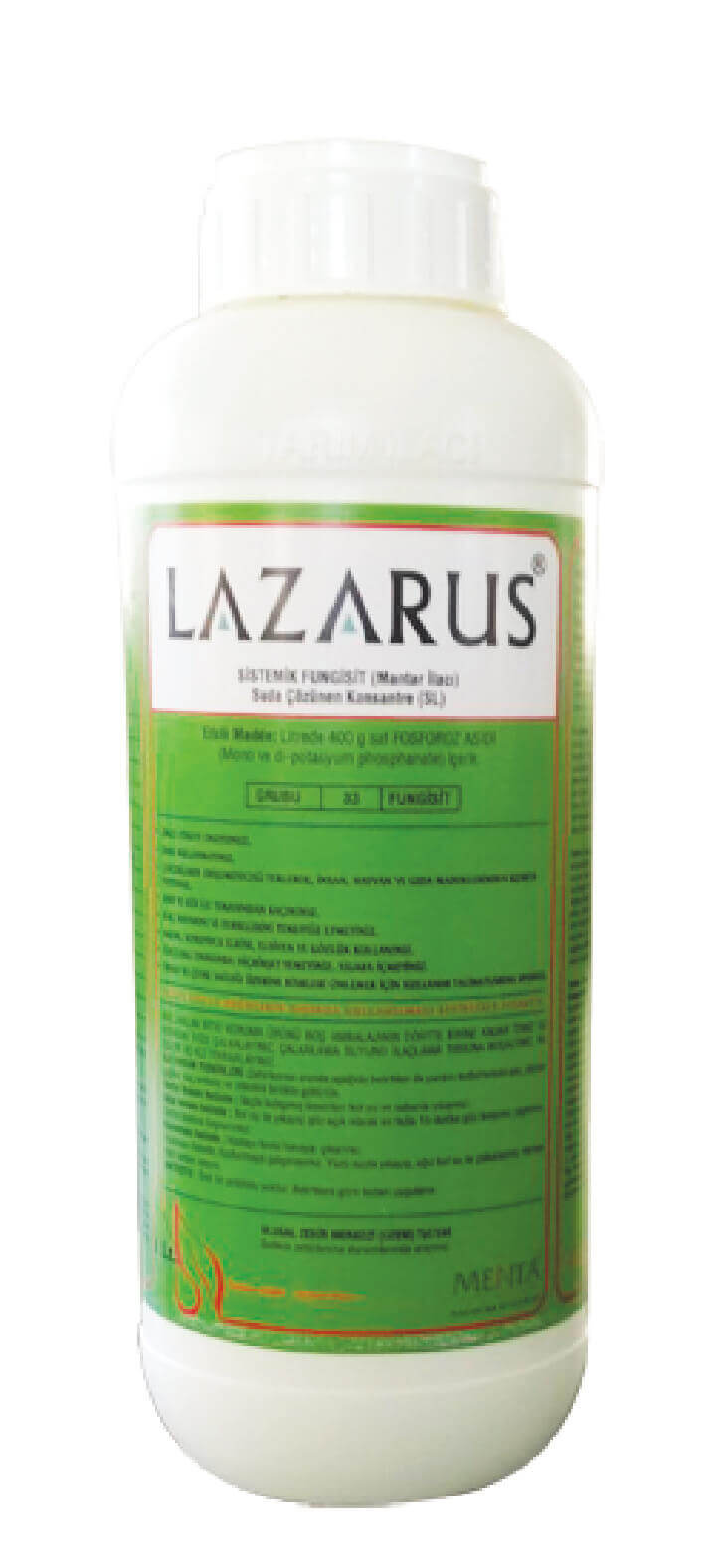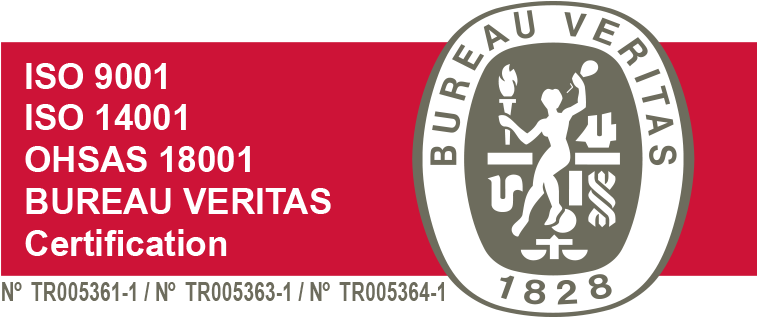Product Certificate and Label
| Name of the Product | : | LAZARUS |
| Active Substance | : | lt contains 400 g of pure Phosphorus Acid |
| Formulation Form | : | Water-Soluble Concentrate (SL) |
| Specification | : | A systemic fungicide |
| Group | : | 33 FUNGICIDE |
| Environmental Impact | : | Put water up to one fourth of the empty package of plant protection product and rinse it properly. Transfer the rinsing water into disinfection tank. Repeat it three times |
| Antidote | : | There is no special antidote. Treatment is applied according to the symptoms. |
| Form Of Market Presentation | : | 1 L |
MISCIBILITY STATUS
If it will be applied for the first time, do not mix it with other products in the tank and do not apply it on the plants without testing the miscibility status. If it will be mixed with emulsion concentrate (EC) products, first of all, put emulsion concentrate product into the tank, add some water and mix them before putting LAZARUS.
PREPARATION FOR APPLICATION
Usage time of LAZARUS is important. Predictions and warnings towards mildew must be taken into account for the application of LAZARUS, or disinfection application must be carried out when climate conditions increasing the disease risks occur.
VINEYARD: The first disinfection application must begin when the first suckers reach 25-30-cm-length. 2nd and following disinfections must be carried out at intervals of 10-12 days by considering the impact of first application, course of disease and meteorological factors.
TOMATO: Disinfection application must be performed as soon as conidial cover with 3-mm-diameter like white ash is seen on subsurface of brown spots in the tomato leaves. Disinfection applications must continue to be performed at intervals of 10 days by considering the intensity of disease and climate conditions.
GOURD FAMILY - CUCUMBER (Greenhouse): Disinfection application begins when the plants are divaricated or when the first mildew sign is seen, and continues at intervals of 8-10 days by considering the intensity of disease.
LETTUCE: Protective disinfection application must be performed before the occurrence of disease. If there is mildew, first unhealthy parts must be gathered, then application must be performed continuously at intervals of 7 days until confusing the seedlings. After that, disinfection process must begin and continue at intervals of 7 days as soon as disease was occurred in the environment.
CITRUS: The best time for the application against the fruit infections is the period before the rain or just after the first rains in autumn. If it is too rainy, the second disinfection must be carried out approximately 15 days after the first application. Against body and root collar diseases, first of all, spotted parts must be clean, and then the parts up to 1 – 1.5 meters of tree’s corolla must be disinfected well.
POTATO: The disinfection must be carried out when climate conditions such as high moisture, which are suitable for the occurrence of disease, are seen, and it must be repeated at intervals of 10 days by considering the intensity of disease.
RESISTANCE
The plant protection product called LAZARUS is a fungicide classified as Group 33 according to action of mechanism. Recurring applications of the plant protection products with the same action of mechanism promote multidrug resistance. Therefore, please do not exceed the recommended number of application for LAZARUS in a season to retard multidrug resistance. In case it is necessary to repeat the application, be attentive to use one of the plant protection products with a different action of mechanism (different from Group 33).
| PLANTS AND PESTS THAT PRODUCT IS USED FOR | ||
| NAME OF PLANT | NAME OF DISEASE | USAGE DOSE AND PERIOD |
| *Vineyard | Plasmopara viticola | 400 ml/100 L of water |
| Tomato | Phytophthora infestans | 400 ml/100 L of water |
| Gourd Family- Cucumber (Greenhouse) |
Pseudopeonospora cubensis | 400 ml/100 L of water |
| Lettuce (Greenhouse) |
Bremia lactucae | 400 ml/100 L of water |
| Citrus | Phytophthora citrophthora | 1000 ml/100 L of water |
| Potato | Phytophthora infestans | 400 ml/100 L of water |
* It cannot be used in the vineyard fields from where the leaves are harvested for consumption purposes.




